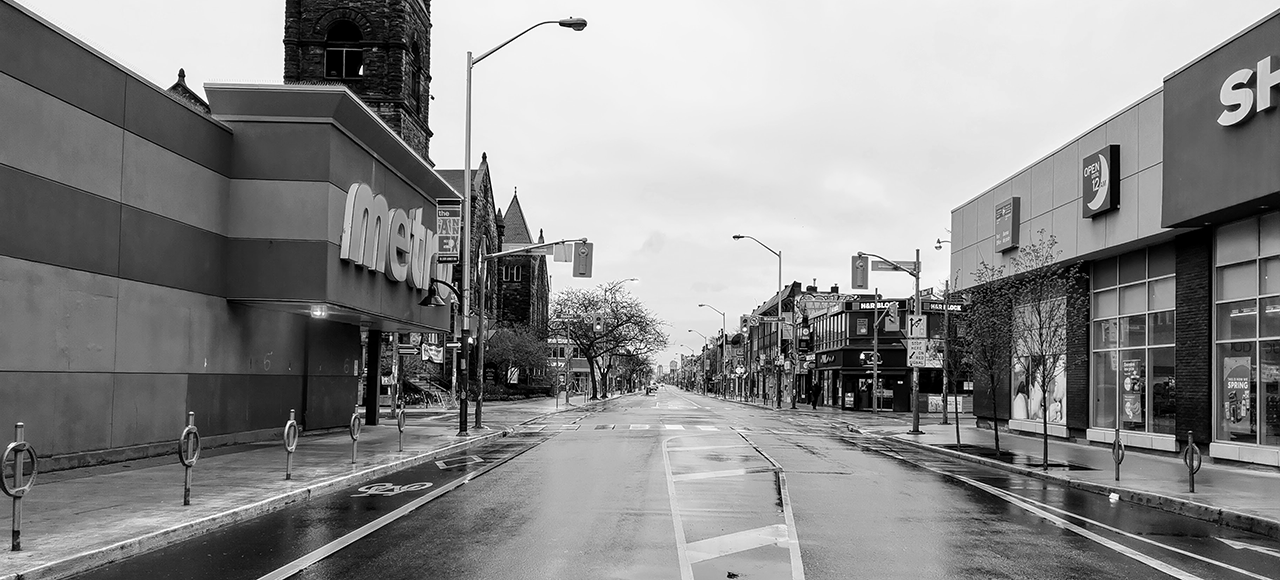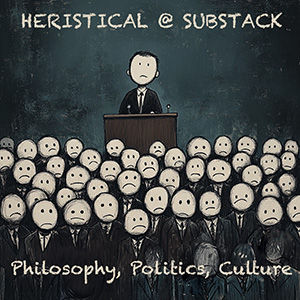
If you’re reading this piece as it comes out, there’s a good chance you are reading it at home. That’s because you’re engaged, like so many of us, in social distancing as part of the broader response to coronavirus disease 2019, or COVID-19. As of the 8th of May, 2020, 3.8 million people have been confirmed with the disease, and more than 261,000 have died. Of those deaths, more than a quarter have occurred in the United States.
Social distancing is an integral part of our response to this pandemic. Nonetheless, particular instances of social distancing, of which they are many, require some kind of ethical justification. That’s because like most public health measures, social distancing measures can interfere with individual freedoms, and cause harm. In this short essay I’ll ask what social distancing entails, why it raises ethical issues, and then finally what kind of social distancing measures are justified.
What is Social Distancing?
We’re all probably at the stage of knowing social distancing when we see it, because we’re living it day to day. But unlike quarantine — the confinement of persons who are suspected to have been exposed to the disease — social distancing isn’t well defined as a practice. That’s because social distancing isn’t a single thing. In fact, the use of “social distancing” as a catch all is fairly recent: in their 2004 planning for a return of SARS or a similar disease, for example, the US Centers for Disease Control and Prevention refer to “measures to increase social distance,” rather than “social distancing,” and those measures are extremely varied. The term social distancing seems to appear a few years later in the context of pandemic influenza, which gives you an idea of how recent the term is. That’s not to say that social distancing practices themselves are new. Jason Schwartz’s account of the turn to biomedical responses in public health shows us that until relatively recently, social distancing measures — and “nonpharmaceutical interventions” in general — were more or less all of public health.
Social distancing then, describes a wide range of practices. It includes stay-at-home orders by governments, which may be more or less enforced through curfews and travel restrictions; the shuttering of businesses, schools, and government offices; banning or restricting public gatherings; the use of masks in public; and the 6-foot separation recommendation many of you are familiar with in the case of COVID-19. These measures are merely physically distancing us. They are intended to remove points of interaction between us, and in particular between different subgroups of our community, to prevent a communicable disease from spreading between groups. Stopping people within families, for example, getting sick off each other is very labour intensive. But stopping transmission between families either through shared workspaces or schools can be effective at breaking chains of transmission in society.
Social distancing practices arguably include the design of social institutions, or even our environments. Mandated sick leave policies, among other employment rights, are effective forms of social distancing, and have been found to reduce flu infection rates. Urban architecture may also provide social distance: Bogotá is opening new bike lanes to further reduce the number on commuters on public transit, allowing individuals who can to use bicycles stay apart rather than use transit where they can be infected or transmit COVID-19 — which also makes transit safer for those who can’t ride. People have been planning the physical shape of communities around infectious disease even before the advent of germ theory, such as Frank Olmstead’s design of Central Park.
Why Does Social Distancing Raise Ethical Issues?
Before dealing with the current controversy and its distinctive political elements, it’s worth asking why social distancing might raise ethical issues. The main reason it that social distancing can entail what the public health ethics literature sometimes refers to as a <href=”#LibLimConCenTasPubHeaEth”>liberty-limiting or liberty-restricting measures. That is, enacting public health measures that constitute social distancing can harm people, or infringe upon their freedoms in important ways.
Public health ethics hasn’t paid a lot of attention to social distancing measures, however. I think this is because social distancing differs from other public health measures in terms of the kinds of liberties it infringes upon. Quarantine is the paradigm of a liberty-limiting measure, because it directly and obviously restricts an individual’s freedom of movement in the name of public health. Rights to freedom of movement are recognised as fundamental human rights, though they aren’t unlimited in their scope. Moreover, insofar as our rights to freedom of movement constitutes a right to be free from interference in our movement, quarantine clearly infringes upon our freedom in some important way. So it requires a compelling justification.
On its face, social distancing doesn’t seem quite so bad. After all, social distancing need not require anyone to force you to stay at home. It might in some cases, but it’s definitely not an essential feature of social distancing measures. In some cases, social distancing might be effective without directly interfering with your movement at all. I’m sure a lot of you are currently familiar with the feeling that no one needs to force you to stay home, because there’s not really anywhere to go right now.
But I think that feeling points to a way social distancing impacts us in an important way, albeit one that is a little less obvious than quarantine (which involves locking someone or even many someones up). Applied broadly enough, and for enough time, social distancing can damage our ability to form communities, and limit our opportunities. It reveals that freedom of movement and freedom of association are, in small but deeply important ways, positive or welfare rights. That is, we have a right to community, and to travel, because doing so is deeply important for humans. We obviously don’t have absolute latitude in the kinds of community we can form (especially if others don’t want to form community with us!), but we have some minimal claim that is currently being infringed upon.
Moreover, the way these liberties were infringed upon — particularly for people whose communities didn’t take the problem seriously at first, and then suddenly “Cancelled Everything”, this may seem like a form of domination. That is, the way some social distancing measures have been enacted has revealed the degree to which our employers, government, and other powerful actors in our lives have the arbitrary ability to close off our options, and potentially leave us without any recourse.
Social Distancing Kills
Social distancing can also hurt you. Again, not every measure we can use to increase social distance, and not every way of implementing the same measure, hurts us to the same degree. But social distancing can and does harm individuals. Those harms can be direct or indirect; proximate or long-term.
Direct and proximate harms of social distancing arise because social distancing itself is hurting them right now. These are the people who can’t get seen because acute care centres are closed, physicians aren’t taking new places, and getting care over the phone is hard. They are the folks who are having cardiac events and can’t get help. They might also be people form whom home is not safe, and now have nowhere else to go, including victims of domestic abuse. These are the people for whom the infringements and potential domination above is harming them in clear-cut ways.
Some are being indirectly harmed by social distancing arrangements right now. These are the “essential personnel” who are still expected to be on the job, but may lack the support that allows them to stay home if they are sick without losing their job, or who aren’t given appropriate protective gear. These are the people who we can’t afford to lose, and sometimes don’t permit to be socially distanced because they fulfil important roles in society. But they can be harmed just in case they’re expected to shoulder risk on our behalf in a way that isn’t a fair or proportionate form of sharing risk in society. Many of the ways they are put at risk, moreover — access to paid leave, hazard pay, and protective gear — are failures of our social institutions that predate COVID-19, often by decades.
People may be directly harmed by social distancing, but experience it as a slow burn. These are folks who won’t get screening fast enough to catch that cancer in its earliest stages, or who will live with chronic pain because they couldn’t get access to a physical therapist. Shutting down elective medical procedures will — has — harm people. It just won’t do it today, or tomorrow, but sometime in the future.
Finally, there are the people who are indirectly harmed by social distancing, over a long period of time. Some will struggle to make ends meet for years, even decades, because of the aggregate toll of social distancing and a slow recovery — the folks caught up in the projected 15% unemployment in the USA for April 2020 who, even if only temporary, will be harmed. We know that income disparities and injustices kill; those who suffer the most deprivation under social distancing might weather this storm, but in doing so may borrow against the end of their life to get by.
The Ethics of Social Distancing: More Than a Binary
This is, then, where the rubber hits the road. Social distancing has clear benefits, and COVID-19 is an incredibly dangerous global pandemic. These measures slow the progress of the disease which takes pressure off the medical system, and reduces the overall number of infections. It could save millions of lives in the long run. It also has indirect benefits just as it has indirect harms: in the US, for example, road deaths are down.
On the other hand, it infringes on our liberties and imposes harms. It, moreover, arguably imposes harms, directly or indirectly, on some of the most vulnerable groups in society. The folks who benefit most from social distancing are people like me, and my colleagues in public health who have stable jobs that allow us to work from home. Folks who can’t work from home are the most at risk, and benefit the least from these measures.
Social distancing measures thus need to be necessary and effective in responding to the threat we face, proportionate, and minimally invasive and harmful relative to other options. What does that look like?
To start, the ongoing debate between social distancing and “reopening the economy” is false choice. That’s because social distancing isn’t one thing, and so we can layer measures, or not, as the need arises and as evidence dictates. But it’s also false choice because simply arguing based on the restrictiveness of social distancing measures — between “Cancel Everything” and rescinding all measures that increase social distance — ignores that in many cases the harms of social distancing can be ameliorated with appropriate policies. Not all, but many of the potential harms of social distancing measures are not endogenous to the measures themselves. People can, and should be supported during this time.
Finding ethically justified social distancing measures necessarily entails those supports. The reasons for this are broad. For the consequentialists, and particularly maximisers, the reasons are easy. Presented with a series of options, we ought to take the one that maximises expected global value (whatever we take that to be). Neither simply shutting down everything without support for those who might be harmed by social distancing, nor shutting down nothing/reopening, are going to top a maximiser’s list. Piecewise choices between two terrible options are false choices. Moreover, failing to maximise expected value, for those who subscribe to this, is unethical no matter how you slice it. It may be less unethical to shut everything down without these support measures, but it is still not maximising expected value and thus still fails to meet the demands of ethics.
For the deontologists among us, things can be a bit more varied. With the exception of the most devoted libertarians, however, it seems like most would subscribe to theories that mean that if it doesn’t cost us much (or anything), we ought to take on small risks to prevent others from coming to serious harm — call this a limited “no means to harm” principle. This same principle, however, means that we should take on some costs (say, through the government) to prevent the most serious harms of social distancing.
Moreover, respecting others means understanding that for some, going to work might not be instrumentally irrational. It’s so easy for me to say, as an academic who can work from home (from anywhere, really), that all things considered I should stay home. But if I was faced with a set of choices that entailed either a nonzero, but potentially low chance of getting sick, and — given at my age, the chances of dying from COVID-19 are quite low — a nonzero but potentially low chance of progressing to serious disease and dying from COVID-19 if I am infected; or almost certainly losing my housing (and my family losing their housing) and other basic needs. There are lots of people in that situation, and if we’re committed to respecting the agency of others it seems like we should respect those people by giving them a reason to stay home that they can endorse.
It’s thus likely that most people would be committed to social distancing measures that support not just the most vulnerable, but everyone as they aid in defeating COVID-19 by staying home and staying apart. That mechanism has been achieved to greater or lesser degrees by different countries. But its clear there are basics that need to be in place as we go forward.
Ethical Social Distancing
The most obvious measures are those that reduce the time social distancing measures must be in force. This means comprehensive, accurate testing; ongoing contact tracing and monitoring; increased hospital capacities to pull the threshold of disaster back; and accurate seroprevalence studies to work out who has had the virus, so we have a better picture of where we are globally.
Less obvious, at least if you read the rapidly proliferating “roadmaps to reopening”, is attending to the most vulnerable in society. It is well understood that marginalised populations can become reservoirs for a disease because they are insufficiently protected. Sterling Johnson and Leo Beletsky have outlined how supporting harm reduction facilities can protect individuals suffering from substance abuse disorder and other diseases of despair, and support the pandemic response effort by preventing those marginalised communities from contracting and transmitting COVID-19. This is not only to the considerable benefit of those populations, but will also deprive the disease of places to lurk in our communities — which, if we allow it, will only increase the time we live under comprehensive social distancing.
The next is to expand our concept of “frontline workers”, and support all those on all the front lines through hazard pay, more protective equipment and infection control, and better testing. I am referring to healthcare workers, yes, but also grocery store clerks, take out delivery drivers, food service workers, agricultural workers, workers on critical infrastructure, and major industries that we cannot or should not close. It is fashionable to refer to this outbreak as if it were a war. If that is true than the person at the grocery store or on a farm is as much on the front lines as a nurse, and — assuming you enjoy eating as much as you enjoy hospitals — deserves the same protection.
Next, propping up individuals and families whose economic futures hang in the balance should be done with minimal burden. In the USA, the $1200 individual pay-out has been slow to arrive, and is almost certainly insufficient given the length social distancing measures may last. In Australia, the JobKeeper program has been hampered by confusion and delays, some of which are part of the decades-long tradition of administrative hurdles introduced by conservative approaches to welfare. It is true that crisis demands we cut red tape, but we need to be cutting the right red tape, such as protecting people from entering into poverty, and ideally lifting people out of poverty to avoid the attendant and severe public health costs.
This goes the same for local businesses are threatened by the shutdown. The administrative hurdles presented by small business loans, globally, should be cut. The overall savings, if any, those hurdles imposed are almost certainly less than the benefits of preventing local economies from collapsing before the end of the ongoing shutdown.
Social distancing is absolutely necessary to stem the tide of COVID-19, and if some models are to be believed it could be years before those restrictions can be lifted indefinitely. Lots of people will suffer and die without it, but lots of people will suffer and die through it as well. There is no reason to choose one of those groups over the other, and ethical public health response requires attending to both. We don’t lack the skill or resources to accomplish this, only the political will. As such, we have an obligation to provide the most comprehensive support we can during this crisis.
Nicholas G. Evans is Assistant Professor of Philosophy at the University of Massachusetts Lowell. He maintains an active research program on the ethics of infectious disease, with a focus on clinical and public health decision making during disease pandemics. His edited volume, Ebola’s Message: Public Health and Medicine in the 21st Century focuses on the clinical, political, and bioethical impact of EVD.

